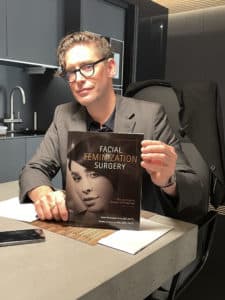What is Plagiocephaly (Flat Head Syndrome)?
Plagiocephaly (also known as “flat head syndrome”) is a congenital head shape problem that results from either coronal synostosis, or from deformation of the skull due to pressure on one side of the skull. It is characterized by a flat spot on the back or one side of the head. This deformation usually occurs because the child tends to sleep or position itself, predominantly on the one side. This causes a flat spot and may often affect the position of the ear and the face.
Slight changes in your child’s skull shape are usually of no consequence and growth usually limits the number of visible irregularities. However, in severe circumstances, it may be appropriate to consider helmet therapy for your child to make sure the head forms as roundly as possible. Most people have a significant amount of skull shape asymmetry and we simply don’t notice that on a day-to-day basis. Therefore, it should not be assumed that any residual asymmetry your child may have as an infant will be noticeable as an adult.

Just Published!
The wait is over! Dr. Deschamps-Braly’s new book “Facial Feminization Surgery: The Journey to Gender Affirmation” is back and available now. This second edition covers the advances in facial feminization as well as helpful patient stories and is a great resource for FFS patients and their loved ones.
LEARN MOREPlagiocephaly and Torticollis
Plagiocephaly may also be associated with children who have torticollis, a shortening or stiffness in some of the neck muscles. This causes difficulty with turning the head and makes it more likely to have a flat spot. Treatments of physical therapy and surgery – as a last resort – are sometimes necessary to treat torticollis and improve the underlying condition. Other treatments for your child would simply include positioning techniques to cause your child to sleep in a different position. Schedule your consultation now.



